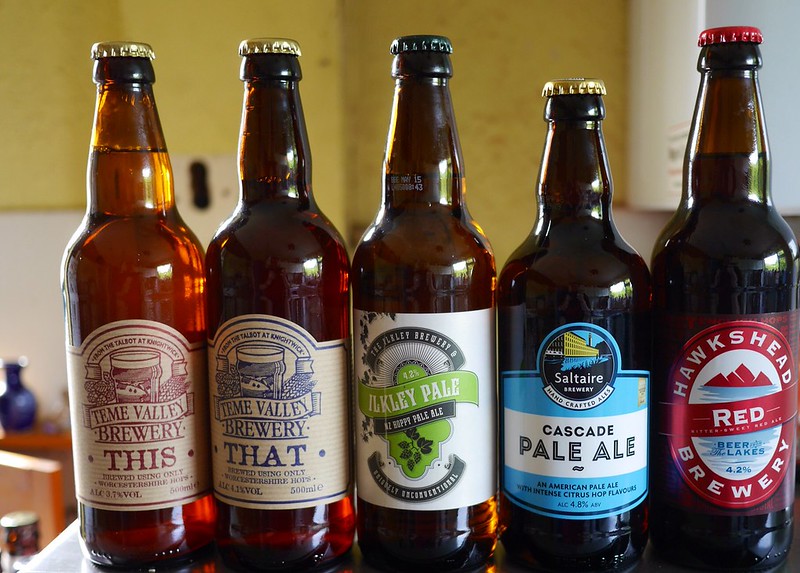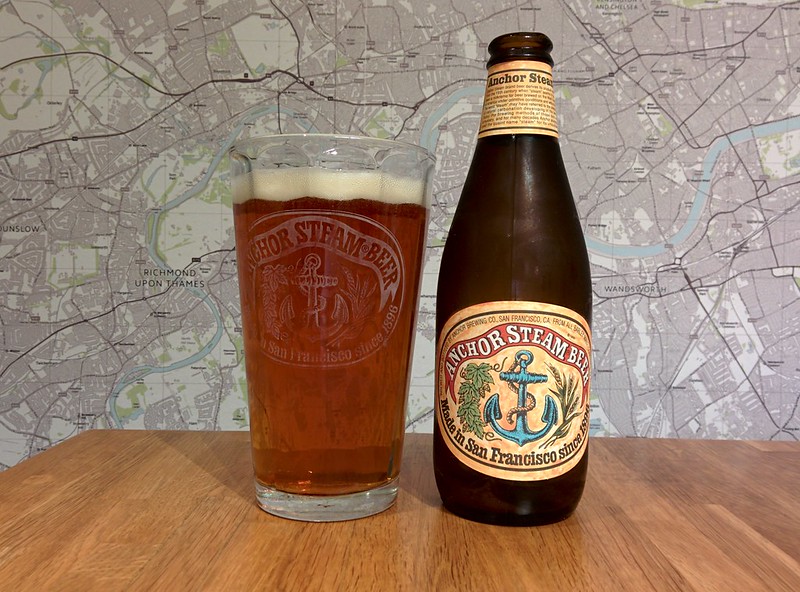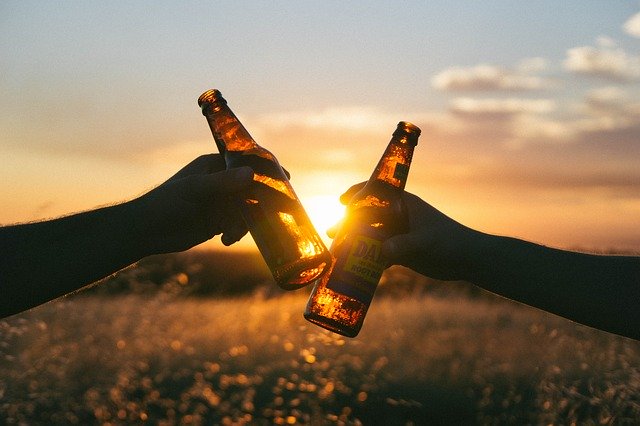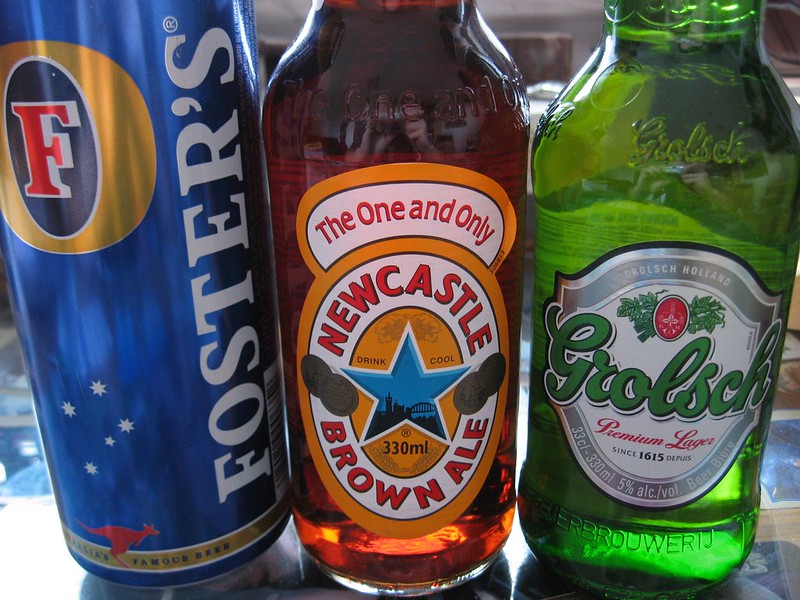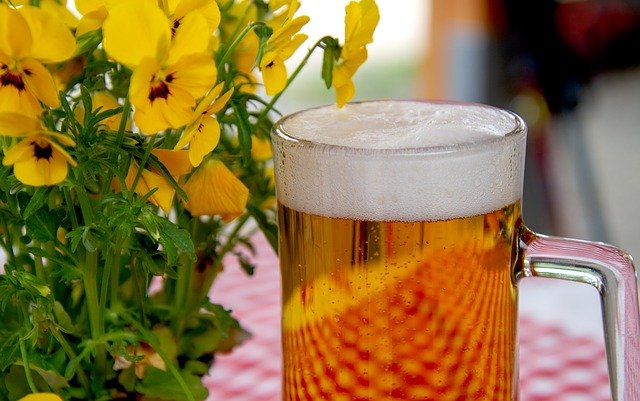Moderate consumption of alcohol holds the key! Beer when taken by healthy people is found to reduce the risk of developing heart diseases. When compared with non-drinkers, one or two drinks of beer in a day can reduce the risk of atherosclerosis, coronary heart disease, and heart attack by approximately 30 to 50 percent.
How Does Beer Affect Health?
Beer contains empty calories; therefore, moderate consumption is okay. However, drinking too much of the beverage can make you prone to obesity and weight gain. This is the root cause of many other health issues including the risk of developing liver disease and heart disease. Moreover, excessive consumption of beer can also lead to alcohol dependency.
Many a times, opening a cold bottle of beer after a long day, is the best thing you could do. Nevertheless, we tend to view beer as a guilty pleasure since all those suds commonly associated with a beer gut and inevitable weight gain, point otherwise. But when beer is consumed in moderation after a stressful week, the health benefits of a pint of beer go far beyond helping you wind down.
Drinking in Moderation
According to the Dietary Guidelines for Americans moderate consumption of alcohol is defined as having one drink per day for women and up to two drinks per day for men. Moreover, research also reveals that there is room for imbibing beer as part of a balanced, healthy diet. Nevertheless, they do not advise you to start drinking beer if you currently abstain.
Often referred to as liquid bread, beer is more like a food than a beverage. It contributes to our daily nutrient intake. You would know just what experts mean, if you have ever tried sipping a pint of Guinness. Nevertheless, you need to be mindful of how many calories you are sipping in each glass including the intake of some good-for-you nutrients.
There is no harm in keeping a six-pack in the fridge if you indulge. You can always pop one open and say “cheers” to the following potential health benefits.
Promoting Diet & Fitness
There are several science-backed reasons that beer can be good for you. Be assured that a pint of beer a day comes along with a host of health benefits as well, including the following:
- Adding More Nutrients to Diet: Beer is found to contain more B vitamins and protein than wine. The antioxidant content however, within beer is equivalent to that of wine. But these specific antioxidants are different as hops and barley used in the production of beer contain flavonoids. These differ from those in wine as grapes are used in the production of the latter. Moreover, beer trumps wine when it comes to B vitamins, folate, niacin, and phosphorus. It also contains fiber and protein. Research studies reveal that beer can help prevent osteoporosis as it contains significant amounts of dietary silicon. Beer also feeds the good bacteria within the gut since they contain probiotics.
- Lowering the Risk of Diabetes: According to a study published in the journal of the European Association for the Study of Diabetes it was found that people who drink beer 3 to 4 times per week were less likely to develop diabetes than those who abstained. Men who enjoyed between one and six beers per week had a 21 percent lower risk of developing diabetes in comparison to those who did not.
- Makes Your Heart Healthier: Beer, like wine, is also associated with a healthy heart and thereby tends to be a favorite choice on the bar menu. Yet another reason to love beer! The American Heart Association Scientific Sessions preliminary study in 2016 followed 80,000 participants for six years. They found that moderate drinkers of beer had the slowest decline in high-density lipoprotein (HDL), or ‘good’ cholesterol levels. Thus, posing a lower risk of developing cardiovascular diseases. The study also revealed that those who drank beer moderately were 42 percent less likely to die of heart disease in comparison to men who have already suffered a heart attack.
- Building Stronger Bones: Move over milk! Beer could be your new bone-building beverage in the fridge as per a review published in the International Journal of Endocrinology. It was found that moderate beer consumption increased bone density in men. This may be due to the silicon found in your pint. Silicon is an essential mineral required for formation of strong bones.
- Boosting Your Brain Power: Beer boosts brain power by protecting the brain from compounds thought to eventually cause cognitive diseases. Researchers at Loyola University in Chicago found that moderate beer drinkers are 23 percent less likely to develop Alzheimer’s and dementia when compared to those who abstained. Beer is also found to raise good cholesterol levels which improve blood flow to the brain. Ordering a few pints of beer can therefore give you a boost at trivia night. People with a slight beer buzz also solved puzzles faster in comparison to sober abstainers. Moderate amounts of alcohol consumption is found to make subjects 30 percent more likely to find unexpected solutions.
- Promote Oral Health: Beer is found to prevent bacteria formation on teeth and oral cavity as per a study published in the Journal of Biomedicine and Biotechnology. Researchers tested the effects of beer extracts on bacteria that form a biofilm, promote tooth decay, and gum disease as well. They found that even the weakest extract of beer blocked the activity of these microbes. Beer also slows their growth and is the best bet for blocking communication between bacteria. Guinness was the beer type that was used for testing. Another good reason to champion your inner Irishman at the bar counter!
- Reducing Inflammation: Next time you are at the bar, tell your spouse you are fighting inflammation. Inflammation in the body is the underlying root cause of many diseases. According to a study published in Molecular Nutrition & Food Research, hops have anti-inflammatory properties. Hops are also an essential ingredient in the production of beer. Researchers found that the consumption of hops in beer interfered with inflammation-causing compounds while comparing the anti-inflammatory effects of different hops.
- A Healthy & Longer Life Span: Studies conducted at the University of Texas found that people who moderately drink beer live longer than those who do not. However, this is no license for binge drinking this weekend. Heavy alcohol consumption will negatively impact health. Nevertheless, studies suggest that a healthy amount of beer can add years to your life. Beer also strengthens your heart and lowers the risk of developing diabetes.
Consuming moderate amounts of beer is likely effective for preventing diseases of the heart and circulatory systems. There is some evidence that drinking alcohol can benefit the heart and reduce the risk of heart attack, and stroke. It can prevent atherosclerosis (hardening of the arteries), and angina (chest pain).
However, drinking one alcoholic beverage per day or consuming alcohol for at least 3 to 4 days per week is a good rule of thumb for people who like alcohol. Nevertheless, do not drink more than two drinks per day, as more than two drinks daily will only increase the risk of overall death and death from heart disease as well.
Researchers have found that:
- Consuming one to two drinks per day reduces the risk of having this type of stroke. Ischemic stroke is usually caused by a clot in the blood vessel. However, it increases the risk of having a hemorrhagic stroke. This is yet another type of stroke that is caused by a broken blood vessel.
- Consuming one to two drinks per day in the year before a first heart attack is commonly associated with a reduced cardiovascular and all-cause mortality risk.
- Consumption of 1-14 alcoholic drinks per week, including beer, by men with established coronary heart disease, it does not seem to have any effect on heart disease or all-cause mortality. However, consuming three or more drinks per day is associated with an increased likelihood of death in men with a history of heart attacks.
- Some early research suggests that drinking about 11 ounces of Maccabee beer, a specific type of beverage (330 ml) daily for 30 days does not seem to reduce blood pressure or improve cholesterol among people with heart disease.
While reducing the risk of dying from heart disease and stroke there also is some evidence that light to moderate consumption of alcoholic drinks by middle-aged and older people can reduce the risk of death from a variety of other causes.
Alcohol is Possibly Effective for…
- Maintaining thinking skills that deteriorate with age. Elderly men having a history of drinking one alcoholic drink per day seem to maintain better general thinking ability during their late 70s and 80s. Nevertheless, consuming more than four alcoholic drinks every day during middle age is significantly linked with poorer thinking ability later in life.
- Risk of CHF or Congestive Heart Failure is found to reduce amongst people aged 65 years or older consuming one to four alcoholic drinks per day.
- People who consume alcohol in moderate amounts seem to have a lower risk of developing diabetes, including type 2 diabetes.
- Diabetics consuming alcohol in moderate amounts seem to have a reduced risk of coronary heart disease compared with non-drinkers with type 2 diabetes. This reduction of risk is similar to that found in healthy people consuming light to moderate amounts of alcohol.
- Moderate amounts of alcohol can prevent ulcers caused by a bacterium called Helicobacter pylori. Evidence suggests that more than 75 grams (moderate to high consumption of alcohol) per week from beverages such as beer and wine can reduce the risk of H. pylori infection.
Alcohol Consumption is Possibly Ineffective for…
- Reducing the risk of death from cancer. However, drinking wine has been linked with some reductions in cancer mortality. Nevertheless, drinking beer does not seem to have this effect. Moreover, on the contrary, there is some evidence that drinking beer might slightly increase cancer-related death. Evidence also suggests that consuming one or more alcoholic drinks might increase the likelihood of death from breast cancer.
Insufficient Evidence to Rate Effectiveness of Alcohol…
More evidence is required to rate the effectiveness of beer for these uses.
- Preventing Alzheimer’s disease among both, men, and women.
- The effect of alcohol on Anxiety is complicated and may depend upon the psychological state of the user.
- Osteoporosis or weak bones. Developing evidence suggests that moderate alcohol consumption can benefit women who have passed menopause. It is linked with developing stronger bones.
- Preventing Prostate Cancer
- Preventing Breast Cancer
- Preventing Gallstones
- Preventing the formation of Renal Stones
- Stimulating Appetite & Digestion
- Other Conditions
NMCD (Natural Medicines Comprehensive Database) rates the effectiveness of alcohol consumption. It is based on scientific evidence according to the following scale:
- Effective
- Likely Effective
- Possibly Effective
- Possibly Ineffective
- Likely Ineffective
- Insufficient Evidence to Rate
Side Effects of Consuming Beer
For most people, beer is likely safe when used in moderation. The dosage of the beverage translates to two or fewer 12-ounce glasses in a day. It is possibly unsafe to consume more than this in one sitting. And can cause a lot of side effects, like blackouts, bleeding, confusion, diarrhea, drowsiness, flushing, hypothermia, irregular heartbeat, loss of coordination, low blood sugar, seizures, trouble breathing, trouble controlling emotions, vomiting, and others.
Long-term usage of the brew can lead to alcohol dependence. It can also cause serious side effects like cancers of the digestive tract, heart problems, liver failure, malnutrition, memory loss, mental problems, swelling or inflammation of the pancreas, and others.
Precautions & Warning
Alcohol, including beer, is unsafe to consume during pregnancy and breastfeeding as it can cause birth defects and other serious harm to the unborn child. Consuming alcohol during pregnancy, especially during the first couple of months, is associated with developmental and behavioral disorders after birth, and foetal alcohol syndrome. It poses a significant risk of miscarriage as well and is probably safer not to consume alcohol when you are pregnant.
Alcohol is also unsafe to consume during breastfeeding. It finds its way into breast milk and can cause abnormal development of skills in the child that involve both mental and muscular coordination. including the ability to turn over. Beer or alcohol will also disturb the sleeping pattern of the infant. Alcohol also seems to reduce the production of milk despite rumours to the contrary.
Occasional reports of developing asthma have also been noted from drinking beer. It can also make gout worse. Although there is evidence that drinking beer in moderation can help to prevent congestive heart failure, the brew is harmful when used by someone who already is undergoing this condition.
Alcohol can cause pain in the chest and worsen congestive heart failure. Having three or more alcoholic drinks in a day can increase blood pressure and worsen high blood pressure. It can cause hypertriglyceridemia with substantive high levels of blood fats called triglycerides. Consuming alcohol can also worsen this condition.
Drinking alcohol will worsen insomnia and you may have trouble sleeping. It can make liver disease worse. Certain disorders of the nervous system are also found to worsen with the consumption of alcohol.
A condition of the pancreas called pancreatitis is found to worsen with the consumption of alcohol. It can cause or worsen stomach ulcers, or a type of heartburn called GERD (Gastroesophageal Reflux Disease).
Porphyria is a condition of the blood. The use of alcohol can also worsen porphyria. Having three or more drinks of alcohol per day will reduce thinking skills and worsen mental problems as well.
Beer is also found to slow down the central nervous system. Combining beer with anesthesia and other medications during and after surgery is a matter of concern. It can extensively slow down the central nervous system. So stop consuming beer or alcohol at least 2 weeks prior to scheduled surgery.
Interactions With Medications
There are numerous classes of prescription medications, and anti-inflammatory agents, including antibiotics, antidepressants, antihistamines, barbiturates, benzodiazepines, histamine H2 receptor antagonists, muscle relaxants, nonnarcotic pain medications, opioids, and warfarin that can interact with alcohol,
These Medications Should Not Be Mixed With Alcohol:
While less than 1 drink a day (moderate alcohol intake) may have heart health benefits, there is a very real risk associated with drinking any type of alcohol, including beer. when taking these common prescription medications:
- Anti-anxiety & Sleeping Pills
- Antidepressants & Mood Stabilizers
- ADHD Medications
- Antibiotics
- Coumadin
- Diabetes Medications
- Erectile Dysfunction Medications
- Nitrates & Other Blood Pressure Drugs
- OTC Cold & Flu Treatments
- Painkillers
About Mixing Alcohol and Medications
Alcohol along with medications can interact in different ways:
- Alcohol can make medications less effective
- Alcohol can make medications toxic to the body
- Alcohol can worsen side effects from medications
Mixing medications with alcohol can cause new symptoms and make you feel extremely ill. You may feel tipsier if you take certain medications and alcohol at the same time.
Moreover, women should be extra careful as females have higher blood alcohol levels than men after drinking the same amount of alcohol. Alcohol may be riskier for them than it is for men. This is because females are found to have lower levels of alcohol dehydrogenase catalyst. It is the enzyme that helps to break down alcohol in the body.
Older people should also take special care. It takes longer for the body to break down alcohol as you age. The alcohol sticks around longer in the blood. The chances of bad interactions are higher as older people are also more likely to take medications.
Dosing Is The Key
Intake of alcohol is often measured in the number of ‘drinks.’ Where one drink is equivalent to a 4 oz or a 120 ml glass of wine, 12 oz of beer, or 1 oz of liquor.
Scientific research has studied the following doses as safe and beneficial:
Oral Consumption:
- One or two 12 oz drinks of beer per day for lowering the chance of developing heart disease or stroke.
- Up to four glasses per day for lowering the chance of developing heart failure.
- Up to one drink per day for a smaller reduction in thinking skills in older men.
- Three drinks per day to two drinks per week for reducing the risk of type 2 diabetes in healthy men.
- Up to seven drinks per week for reducing the risk of coronary heart disease in people with type 2 diabetes.
- Consume 75 grams of alcohol from beverages such as beer for lowering the chances of developing Helicobacter pylori infection. Helicobacter pylori are bacteria causing stomach ulcers.
People from all around the world have been consuming alcohol for thousands of years. Beer is a popular alcoholic beverage containing a variety of minerals and vitamins. It is made from cereal grains and yeast. Whole foods like vegetables and fruits are however considered a better source of B Vitamin. Normally made by brewing and fermenting cereal grains with yeast, hops, and other flavoring agents, most types of beer contain 4–6% alcohol. But the beverage can range anywhere between 0.5–40 percent. Although emerging research has shown that moderate amounts of alcohol have health benefits, many people still wonder if having beer can be as good as wine.
